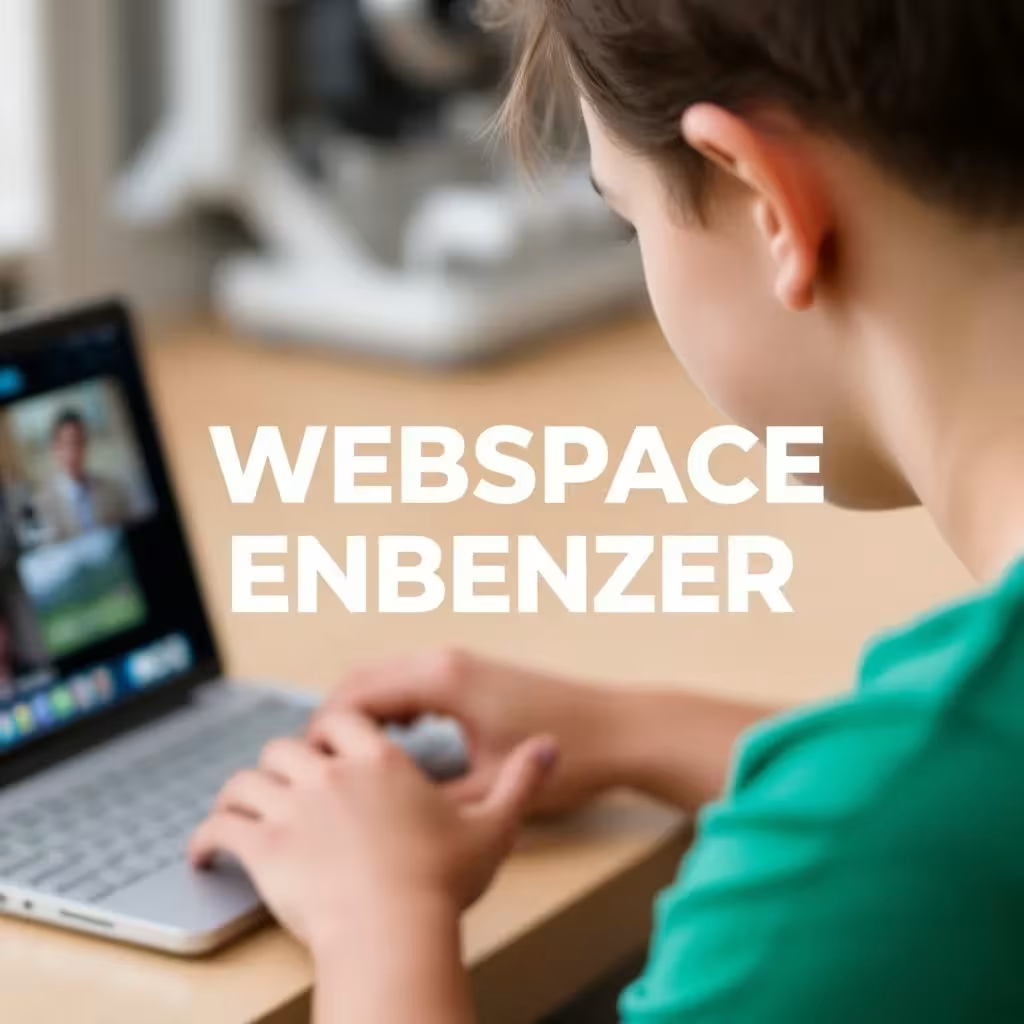Functionality and user interface
The classic editor in WordPress is similar to a simple word processing program. It offers a single text box for the content and a range of formatting options in a toolbar at the top. This familiar interface makes it particularly attractive for beginners and long-time WordPress users. Authors can quickly and easily write, format and publish texts without having to deal with complex layout options.
In contrast, the block editor, also known as Gutenberg, works with individual content elements, so-called blocks. Each paragraph, image, gallery or other element is a separate block that can be individually edited, positioned and customized. This modular approach allows for more flexible layout design and offers more control over the design of the page. Users can simply drag and drop, nest or duplicate blocks, making it much easier to customize content.
In addition to basic operation, the block editor offers advanced features such as reusable blocks, custom styles and integrations with third-party plugins. These features allow for deeper personalization and customization of content, which is especially beneficial for professional web designers and developers.
Flexibility and design options
One of the main advantages of the block editor is its exceptional flexibility in creating complex layouts. Users can use various blocks such as columns, media-text combinations, buttons, videos and custom HTML blocks to create sophisticated designs without having to rely on additional plugins or special themes. This flexibility makes the block editor particularly attractive for designers and users who want visual control over their content.
In addition, the block editor enables the creation of reusable blocks that can be used in multiple posts or pages. This saves time and ensures consistency in design. For advanced users, the block editor also offers the option of creating your own block types or customizing existing blocks using CSS, which further expands the design options.
The classic editor is more limited in this respect. Complex layouts often require the use of shortcodes, tables or additional plugins, which can limit user-friendliness. This can lead to confusing content management and potential compatibility issues. However, the classic editor offers a simpler and more direct way to edit plain text, which can be beneficial for authors who want to focus on the content.
Learning curve and user-friendliness
For users who are familiar with the classic editor, switching to the block editor can be a challenge at first. The new user interface and the concept of blocks require a certain period of familiarization. However, many users report that they come to appreciate the advantages and flexibility of the block editor after an initial learning phase. Tutorials and extensive documentation, such as the resources available on [WordPress.org](https://wordpress.org/support/), can help ease the transition.
The block editor also offers a preview function that allows users to see their pages and posts in real time. This promotes a better understanding of the final appearance and enables quick adjustments. Interactive tutorials and embedded help functions also support user-friendliness.
The classic editor scores points here with its simplicity and flat learning curve. The classic editor can be the more efficient choice, especially for users who mainly create text-based content. It allows text to be entered and formatted quickly without being distracted by additional design options. In addition, many long-time users simply feel more comfortable with the familiar environment, which can increase productivity.
Compatibility and future-proofing
An important aspect when choosing an editor is compatibility with themes and plugins. The block editor is the new WordPress standard and is being continuously developed. Most modern themes and plugins are optimized to work with the block editor, which makes integration smoother. This makes the block editor the more future-proof option, as it remains compatible with the latest WordPress updates and features.
The classic editor is still supported by a plugin, but it is unclear how long this support will continue. Websites that continue to use the classic editor could experience compatibility issues with newer WordPress versions and plugins in the future. In addition, new features and improvements that are developed exclusively for the block editor could remain inaccessible to classic editor users.
In addition, the WordPress community actively promotes the further development of the block editor, while the classic editor tends to stagnate. This means that future innovations and security updates will increasingly focus on the block editor, which will further consolidate its role as the preferred editing tool.
Performance and loading times
There are differences between the two editors in terms of performance. The block editor can lead to increased page loading times, especially with complex layouts. This is due to the additional JavaScript logic required to display the blocks. However, continuous optimizations and improvements on the part of WordPress have significantly increased performance, so the differences are often minimal.
The classic editor, on the other hand, generally produces leaner HTML code, which can lead to faster loading times. The classic editor can therefore be more efficient for simple, text-based pages. However, the actual performance depends heavily on the specific implementation and the theme used. Modern caching techniques and optimizations such as content delivery networks (CDNs) and image optimization can minimize the performance differences between the two editors.
It is important to perform regular performance tests and use tools such as [Google PageSpeed Insights](https://developers.google.com/speed/pagespeed/insights/) to monitor loading times and make optimizations. A well-optimized website will provide a positive user experience regardless of the editor used.
Extended functions and customization options
The block editor offers advanced functions that go far beyond basic content creation. These include
- Reusable blocks: These allow blocks created once to be used in multiple posts or pages, promoting consistency and efficiency.
- Inner blocks: Allow blocks to be nested within other blocks, enabling more complex layouts and structures.
- Block patterns: Prefabricated layouts that can be used as a starting point for pages and posts.
- Custom block styles: Allows you to customize the appearance of individual blocks with additional CSS classes or direct style adjustments.
In addition, the block editor supports integration with third-party plugins that provide additional block types or extended functionalities. This promotes a modular and expandable architecture that can be individually tailored to the needs of the website.
The classic editor, on the other hand, offers fewer built-in customization options. Extensions often rely on external plugins that need to provide additional functionality. This can lead to a fragmented user experience and potential compatibility issues, especially if multiple plugins are used simultaneously.
Mobile friendliness and responsive design
In today's mobile world, the mobile-friendliness of websites is essential. The WordPress block editor was built with responsive design in mind, allowing users to create content that adapts seamlessly to different screen sizes. The blocks are inherently flexible and automatically adapt to mobile, tablet and desktop views without the need for additional customization.
The classic editor can also create responsive content, but often requires manual adjustments and additional CSS styles to ensure that the page looks good on all devices. This increases the effort required to create the website and can increase the risk of display problems on different devices.
By using the block editor, website operators can ensure that their content is displayed optimally on all devices without having to spend additional time testing and adjusting the layout. This improves the user experience and can have a positive impact on the website's SEO ranking, as search engines favor mobile-friendly pages.
Accessibility and SEO optimization
Accessibility is an important aspect of web development that ensures all users, including people with disabilities, can access content. The WordPress block editor offers improved tools and structures that make it easier to create accessible content. Each block is semantically structured and can be tagged with ARIA labels and other accessibility features to increase accessibility.
Furthermore, the block editor is designed to be SEO-friendly. The structured and clean HTML output improves readability for search engines, which can have a positive effect on the ranking. In addition, the visual preview function facilitates the optimization of meta data and the placement of keywords without compromising the readability of the content.
The classic editor offers basic SEO features, but often requires the use of additional plugins such as Yoast SEO or All in One SEO to perform advanced optimizations. While these plugins are powerful, the combination with the classic editor can be more complicated and require additional configuration.
Conclusion and recommendation
The choice between the block editor and the classic editor ultimately depends on individual needs and preferences. The block editor offers more flexibility, design possibilities and is the more future-proof option. It is particularly suitable for users who want visual control over their content and are willing to learn a new system. Thanks to its advanced features and seamless integration with modern themes and plugins, the Block Editor is ideal for creating engaging and complex websites.
The classic editor, on the other hand, remains a solid choice for users who mainly create text-based content and prefer a simple, familiar user interface. It can also be useful for websites that rely heavily on older plugins or themes that are not yet fully compatible with the block editor. For authors who want to focus on pure content without having to deal with additional design options, the classic editor offers an efficient solution.
For most new WordPress projects and for users who want to future-proof their websites, the block editor is the recommended choice. Not only does it offer more design options, but it is also continuously developed and improved by WordPress. In addition, the block editor supports modern web standards and best practices, which leads to better performance and user experience in the long term.
Regardless of the choice of editor, it is important not to neglect [WordPress security](https://webhosting.de/wordpress_richtig_absichern/). Regular updates and the use of secure plugins are crucial for the protection of your website. In addition, implementing [WordPress sidebar widgets](https://webhosting.de/wordpress-sidebar-widgets/) can further improve the functionality and design of your website, regardless of which editor you use. Finally, it is advisable to familiarize yourself with the [most common WordPress beginner mistakes](https://webhosting.de/die-haeufigsten-wordpress-anfaengerfehler/) to ensure smooth creation and management of your website.
Additional considerations when choosing an editor
In addition to the points already mentioned, there are other aspects that should be considered when deciding between the block editor and the classic editor:
Integration with third-party plugins
The block editor offers tighter integration with modern third-party plugins that provide additional block types and functions. Plugins such as [Advanced Custom Fields (ACF)](https://de.wordpress.org/plugins/advanced-custom-fields/) and [Elementor](https://elementor.com/de/) significantly extend the capabilities of the block editor and allow the creation of customized layouts without programming knowledge. The classic editor, on the other hand, often requires separate plugins for similar functions, which can make administration and compatibility more difficult.
Content reusability and consistency
Another advantage of the block editor is the ability to create reusable blocks. These can be used in different parts of the website, ensuring consistency in design and functionality. This is particularly useful for large websites with many similar elements, such as call-to-action buttons or frequently used information sections.
The classic editor does not offer any built-in mechanisms for reusable content blocks, which makes it difficult to reuse content and potentially leads to redundant data. Users would have to resort to external solutions or plugins to achieve similar functionalities.
Support and community
As the block editor is the current WordPress standard, it is widely supported by the WordPress community. There are a variety of tutorials, forum posts and documented best practices that make it easier to use the block editor. In addition, many plugin and theme developers invest their resources in supporting the block editor, which increases the availability of resources and support.
The classic editor is still supported, but community support is declining compared to the block editor. Most new developments and innovations are focused on the block editor, which reduces the amount of available resources and community support for the classic editor.
Costs and resources
While the classic editor requires no additional resources or plugins to create basic content, the block editor may require additional plugins and themes to realize its full potential. These costs should be taken into account when planning a WordPress project. However, many block-based themes and plugins offer cost-effective solutions that can pay off in the long run due to their flexibility and extensibility.
Future prospects and further development
The block editor is still under active development and is constantly being improved by the WordPress community. Future versions are expected to offer even more features and improvements that will make content creation even more intuitive and powerful. These include enhanced design options, better integration with third-party tools and improved performance optimizations.
In the long term, the block editor is expected to remain the dominant editing solution for WordPress, while the classic editor will increasingly take a back seat. For website operators, this means that investing in the block editor will not only better meet current requirements, but also future ones.
Practical tips for switching to the block editor
If you are considering switching from the classic editor to the block editor, these practical tips can make the transition easier:
Step-by-step introduction
Start by using the block editor for new posts and pages, while continuing to edit existing content in the classic editor. This will allow you to gradually get used to the new environment without jeopardizing the ongoing operation of your website.
Training and further education
Use online tutorials, webinars and documentation to familiarize yourself with the functions and possibilities of the block editor. Platforms such as [WordPress.tv](https://wordpress.tv/) offer a variety of resources to help you get started.
Set up test environment
Create a test environment or a local copy of your website to try out the block editor and see how it works with your existing themes and plugins. This will allow you to identify and fix potential problems early on before you make any changes to your live website.
Create backup
Make sure that you always create a complete backup of your website before making any major changes. This gives you the security of knowing that you can always fall back on a working version of your website in the event of problems.
Obtain feedback
If you have a team of content creators, get their feedback and involve them in the transition process. Learning together and sharing best practices can make the transition easier and increase acceptance of the new editor.
Final thoughts
The switch from the classic editor to the block editor in WordPress marks a significant step forward in content creation and website design. While the classic editor scores with its simplicity and familiarity, the block editor offers a modern, flexible and future-proof solution that meets the requirements of modern web design. By using the block editor, users can not only create more appealing and functional websites, but also benefit from continuous improvements and support from the WordPress community.
For a successful migration and optimal use of the block editor, it is important to continuously educate yourself, use the right resources and seek support from the community or professional developers when needed. Ultimately, choosing the right editor contributes significantly to the quality and performance of your WordPress website.



